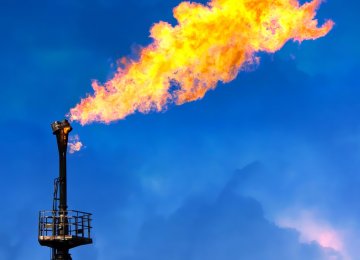Plans are in place to bring the level of gas flaring in the giant South Pars Gas Field to zero and prevent up to 400 million cubic meters of associated petroleum gases from burning off annually.
South Pars Gas Complex, operator of the mega gas project in the Persian Gulf, says it aims to put out all South Pars flares by March 2020, the company said in a report cited by IRNA on Thursday.
"The measure will raise natural gas production from South Pars by 400 million cubic meters a year and generate $80 million in annual revenues with a gas price of 20 cents per cubic meter," the report said.
The company is pursuing the target within the framework of "South Pars Sustainable Development Plan"—a five-year initiative to curtail gas flaring in the world's largest gas reservoir shared between Iran and Qatar.
The scheme will help Iran go a long way in fulfilling its promise to cut back greenhouse gas emissions by preventing significant amounts of associated gas from being released into the atmosphere.
Associated petroleum gas, or APG, is natural gas found with deposits of petroleum. Flaring is the practice of burning natural gas that cannot be processed or sold.
SPGC has estimated that the initiative will cost $5-6 billion and hopes to finance some of that amount from the Green Climate Fund—an international fund established by the United Nations to help developing countries battle climate change.
The fund is expected to raise $100 billion a year by 2020, with developed nations to make the most contributions.
The SP sustainable development plan would be considered for financial aid from the climate fund if it meets certain environmental criteria. But the fund's viability is in question because, as of May 2017, a total of $10.3 billion had been pledged while developing nations have criticized low endowments by the world's largest economies.
Environmental Impact
Gas flaring is a prominent source of pollution. Every year, approximately 140-150 billion cubic meters of natural gas are flared into the atmosphere.
According to calculations by the World Bank, that is equivalent to three quarters of Russia’s gas exports, or almost one-third of the European Union’s gas consumption.
Government data show Iran burned off as much as 56 million cubic meters of gas per week in 2008, which roughly equal the output of a standard South Pars phase in a day. Flaring has now declined to 5 million cubic meters per week.
That amount is expected to fall to 3 million cubic meters weekly by March 2018, end of the current Iranian fiscal year.
SPGC completely halted the burning of gas in a South Pars flare stack for the first time in May.











Add new comment
Read our comment policy before posting your viewpoints